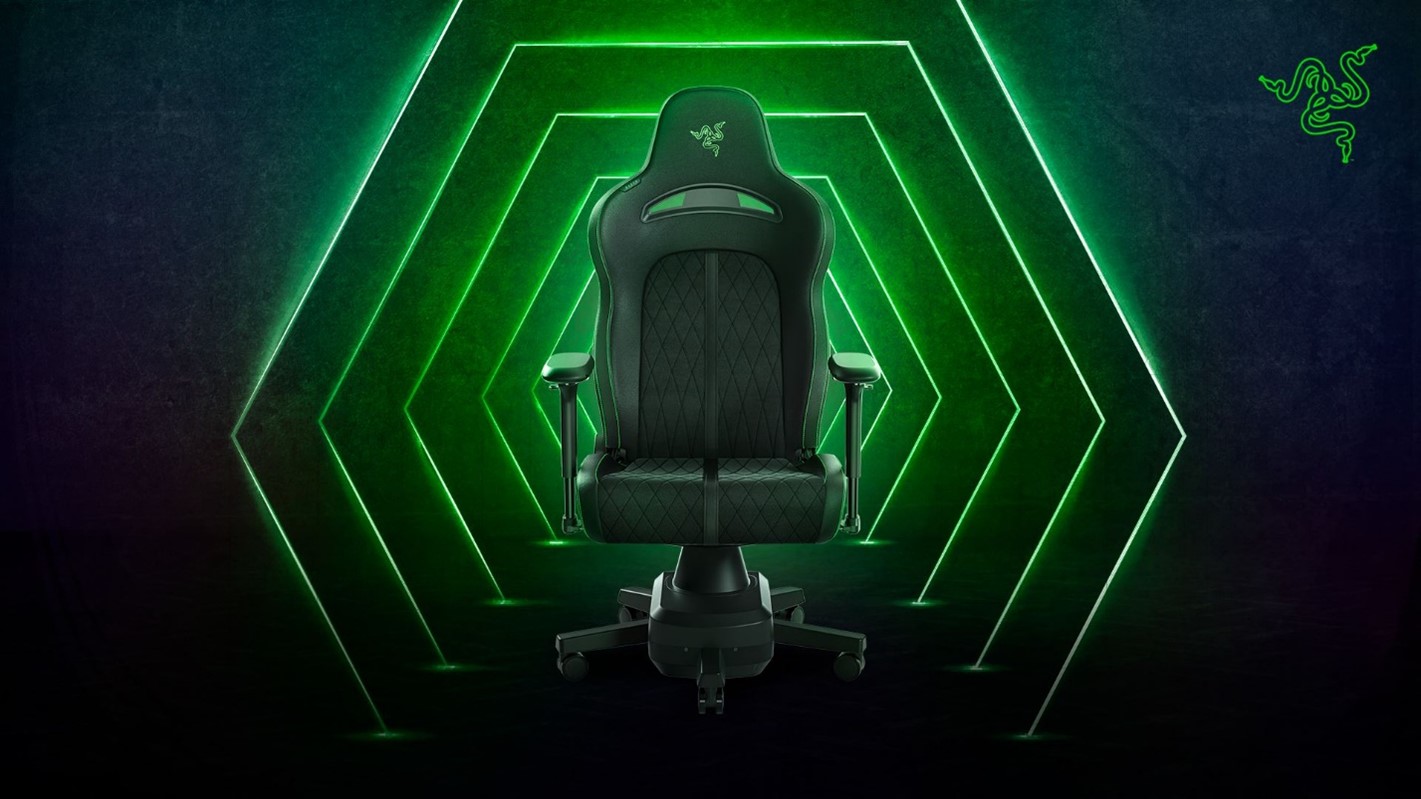CES 2022: Razer Enki Pro HyperSense is the coolest gaming chair we may never see
The Razer Enki Pro HyperSense could be the next evolution of gaming chairs.

The Razer Enki Pro HyperSense isn’t Razer’s first crack at a gaming-chair concept, but it does seem like the first one that might really make it to store shelves.
This inventive piece of furniture combines the comfortable design of the Razer Enki gaming chair with full-body haptic feedback, essentially transforming everything, from movies to music to games, into a fully immersive multimedia experience.
Razer announced the Enki Pro HyperSense at CES 2022. Before you run out to pre-order one, however, you should be aware that the Enki Pro HyperSense is one of Razer’s “concept” products.
Shooting for the moon
Each year at CES, Razer unveils one or two ambitious, pie-in-the-sky projects, which may or may not ever see the light of day. Last year, for example, Razer revealed its Project Hazel face mask, which was eventually sold to customers. But it also revealed its Project Brooklyn gaming chair, which probably never will be.
For those who didn’t see it, Project Brooklyn was a comprehensive PC gaming setup, with a rollable OLED screen, full RGB lighting, a peripheral tray and a haptic feedback system built into the chair.
The Enki Pro HyperSense retains the haptic feedback, but eschews everything else. As such, the Enki Pro HyperSense would probably be “expensive” for the average PC gamer, rather than “completely unthinkable.”
Good vibrations
At first glance, the Enki Pro HyperSense looks like a standard Razer Enki: a high-backed black-and-green gaming chair, with a supportive back, seat and armrests.
Get instant access to breaking news, the hottest reviews, great deals and helpful tips.
The difference lies in the base of the device. Rather than a simple collection of casters, the base also houses a large motor. This sends out haptic signals to the rest of the chair, which vibrates differently depending on whether the chair’s occupant is playing a game or listening to music.
Interestingly, Razer has already collaborated with D-Box, a popular haptic-technology company, to program native support for more than 2,000 games, movies and musical tracks into the Enki Pro HyperSense. The game selection includes Assassin’s Creed Valhalla and Forza Horizon 5. There will also be algorithmic support for haptics on streaming platforms, as well as for compatible controllers, mice and keyboards.
The interesting question, of course, is whether the Enki Pro HyperSense will ever be available to paying customers. The skeptic in me says no. Gaming chairs are a niche product already, and making them even more expensive to facilitate a technology that people don’t really want (full-body haptics) doesn’t seem incredibly realistic.
On the other hand, integrating haptics into a gaming chair is an awful lot cheaper than integrating a rollable OLED screen, which makes the Enki Pro HyperSense much more feasible than Project Brooklyn. I wouldn’t bet on the Enki Pro HyperSense coming out for the consumer market — but I wouldn’t bet that much money against it, either.
For the latest coverage of CES this year, check out our CES 2022 live blog.
For the latest offers from Razer, check out our Razer promo codes.

Marshall Honorof was a senior editor for Tom's Guide, overseeing the site's coverage of gaming hardware and software. He comes from a science writing background, having studied paleomammalogy, biological anthropology, and the history of science and technology. After hours, you can find him practicing taekwondo or doing deep dives on classic sci-fi.
